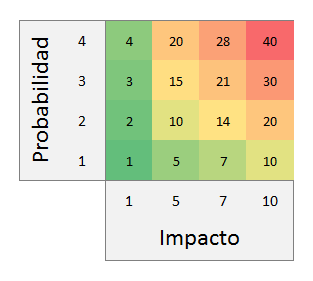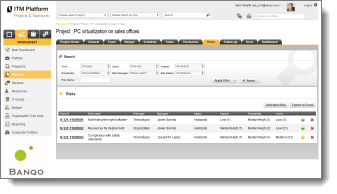 Risk can be defined as an uncertain event or condition that, if it occurs, has a negative effect on a project’s objectives.
Risk can be defined as an uncertain event or condition that, if it occurs, has a negative effect on a project’s objectives.
We must be able to manage this uncertainty and therefore manage risks proactively and efficiently, not just complain about things that happen to us and were apparently out of our control. Proper risk management can make our project avoid, or at least minimise, the negative impact of these problems.
Risk management is one of the knowledge areas that Project Managers need to manage efficiently.
The first and most important step is to identify the risks by asking ourselves: What could happen that may significantly impact the project? It is considered that a risk has a cause and, if the risk occurs or materialises, a consequence or effect. It is important to establish the causes and effects when identifying the risks, in other words, clearly expressing what could happen and how it would affect us.
Once the risks have been identified, they should be assessed according to two criteria:
-
-
The probability of the risk occurring.
-
The impact the risk has on the project objectives.
-
By using this assessment, we will be able to calculate our exposure to each risk. If we assign a numerical value to probability and another to impact, a simple multiplication can be performed using the two values to generate our risk exposure.

The priority will be to manage those risks to which we are most exposed, in other words, those with the greatest probability and impact. There is not much sense in managing risks that are highly unlikely to occur or risks that would have almost no impact on our project.
In order to manage risks correctly, it is important to define a risk manager. Just like many other aspects of management, risks have a certain tendency to be the subject of long conversations in which nobody really takes responsibility for tackling the situation.
Once risks are properly identified, assessed and assigned, response plans need to be executed to reduce our risk exposure. Risk responses are mainly of two types:
-
-
-
Risk Mitigation Plan: this response aims to reduce risk probability before occurrence.
-
Risk Contingency Plan: this response aims to get ready to reduce risk impact after occurrence.
-
-
 Risk response plans can take many forms and it is not possible to establish general guidelines. Past experience and creative thinking helps a lot when looking for the best “solution” to manage each situation. However, it is important for all risk management to be recorded and thus enable everyone responsible for the project to be made aware of it.
Risk response plans can take many forms and it is not possible to establish general guidelines. Past experience and creative thinking helps a lot when looking for the best “solution” to manage each situation. However, it is important for all risk management to be recorded and thus enable everyone responsible for the project to be made aware of it.
Only by using a tool such as ITM Platform will it be possible to gain an understanding of our risk management and create a knowledge base for ensuring greater success in future projects.
